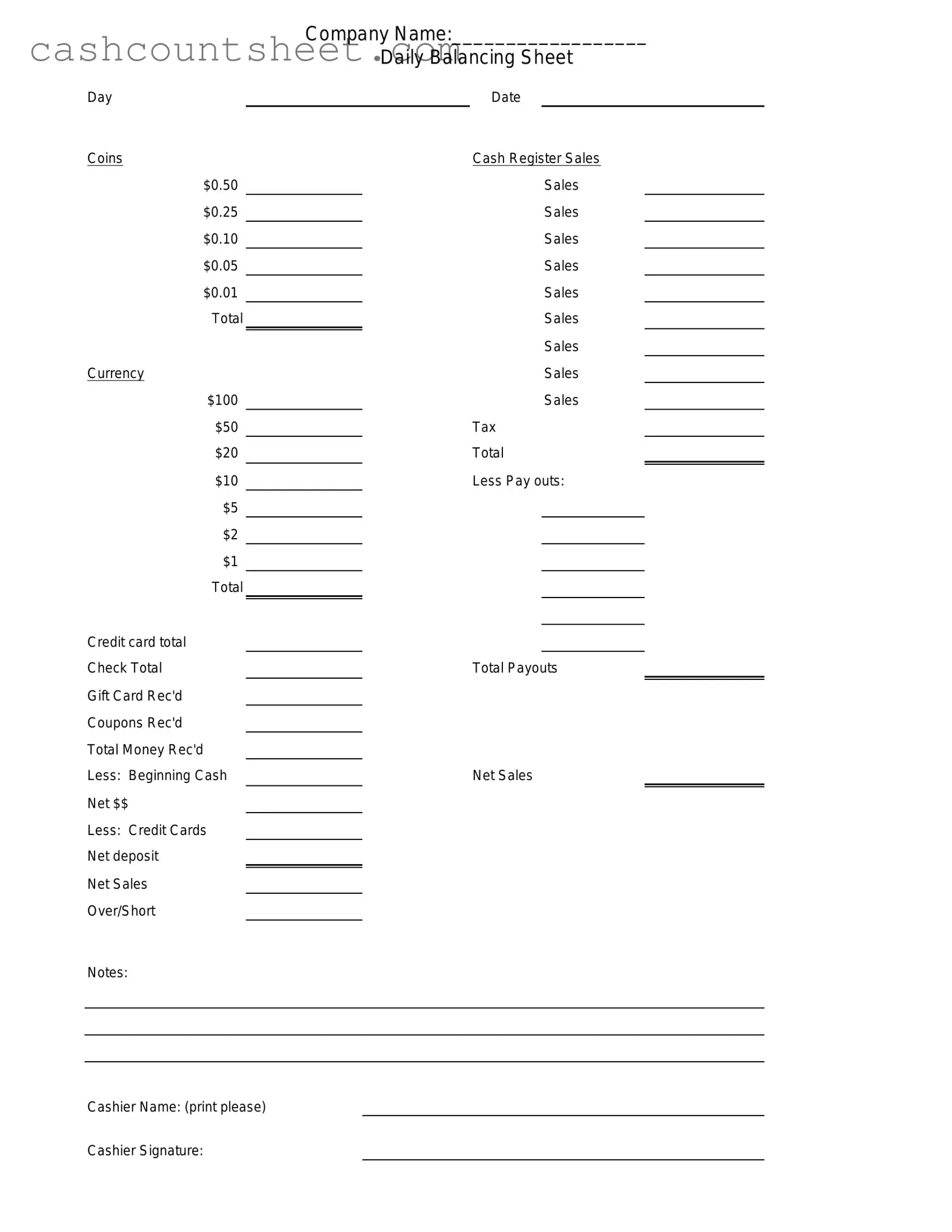Cash Drawer Count Sheet Template in PDF
The Cash Drawer Count Sheet is a crucial document used by businesses to track the amount of cash in their registers at the end of each shift or day. This form helps ensure accuracy in cash handling and provides a clear record for financial accountability. To maintain proper financial practices, it is essential to fill out this form diligently; click the button below to get started.
Access Cash Drawer Count Sheet Editor Now
